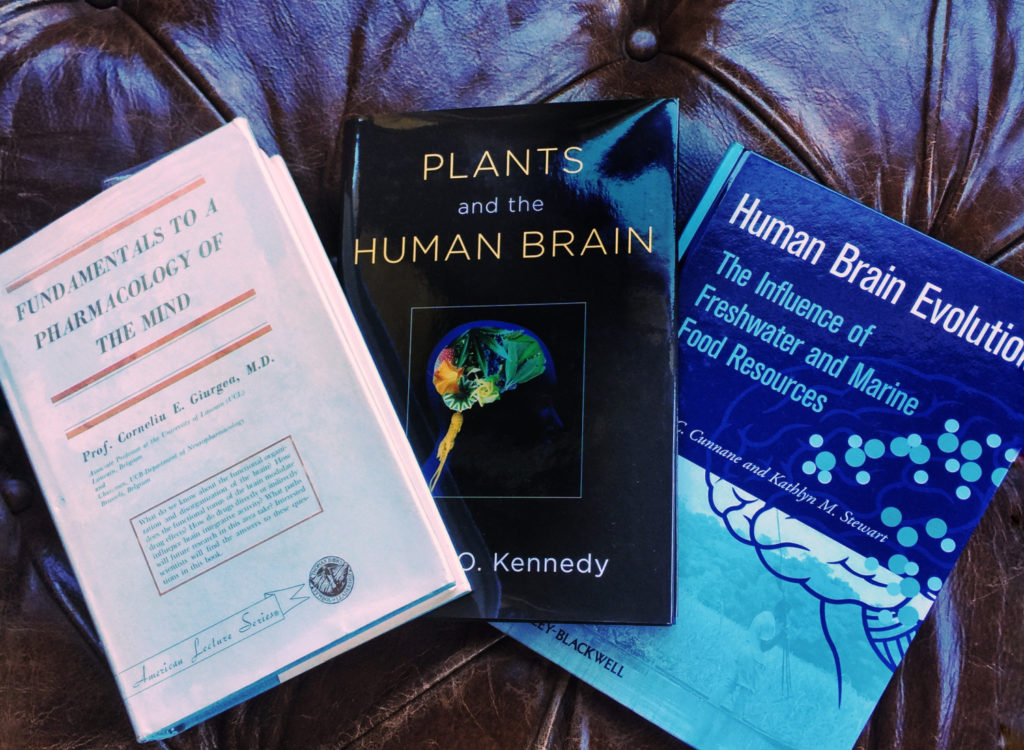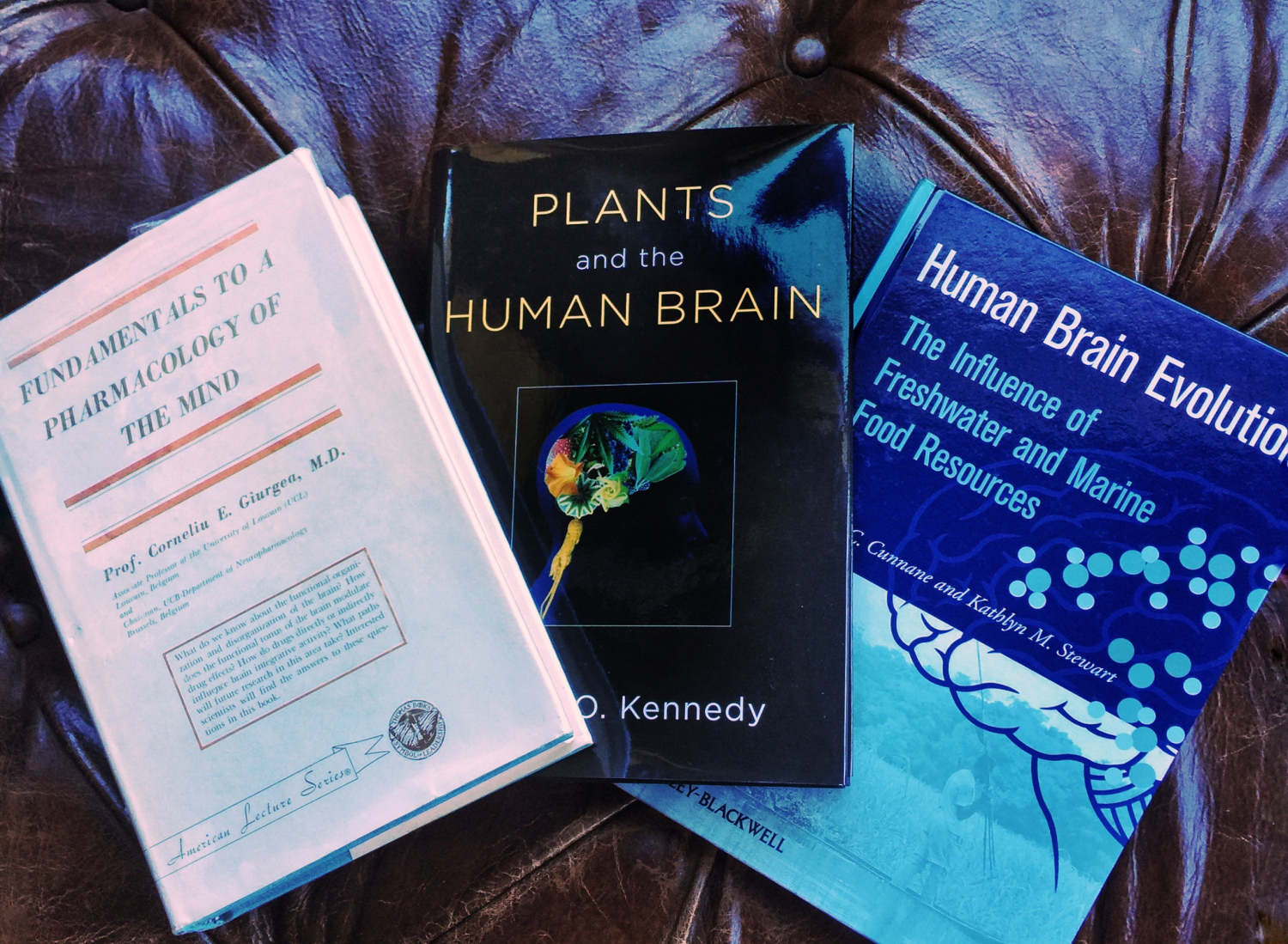The initial concept for this book had been percolating in my mind for a while, as for years I had been piecing together the background on the discovery of piracetam and coining of the nootropic concept from a myriad of sources. Much of the best information I found was originated from obscure sources such as a previously untranslated, non-English research papers (including the original paper introducing the nootropic concept), unindexed but highly cited symposiums, a rare copy of Corneliu Giurgea’s only long-form book on the nootropic concept, and from direct correspondence with scientists and colleagues of Giurgea.
As I dug deeper into the context in which nootropics were introduced and Corneliu Giurgea’s perspective on where they fit into the world (Chapter 8), I became more aware of the historical significance of the introduction of a class of molecules that could safely and sustainably enhance the higher-level activity of the human mind. My knowledge of the vast impact that the introduction of coffee and caffeine had on advancing society and fomenting the Enlightenment (Chapter 3), gave me a blueprint and ultimate hope for how nootropics might help the world (Chapter 10).
Around the same time, I was researching the biological basis of how specific molecules work to alter our brain function and enabled us to break through evolutionary bottlenecks and push beyond our previous cognitive limitations (Chapter 1). As I went deeper into my understanding of the “how” molecules work alter us, I began to want to understand the reason “why” they worked within us. This led me to an examination of the common cellular machinery and evolutionary lineage we share with plants (Chapter 2).
As I was in the midst of this research in early 2017, ABC’s Nightline News came to town to film a segment on nootropics and biohackers in Silicon Valley. They wanted footage of me providing background on the nootropic concept, so I gave a talk titled “Plants, Nootropics, & Human Brain Evolution” where I attempted to unite the main themes of my research, as drawn from these three books:

I say “attempted,” because I underestimated the scope of the undertaking and was unable to succinctly distill the topics into a unified concept. Unfortunately, even though the topics themselves are intriguing, it was arguably my worst talk ever because of how disjointed my assimilation of the concepts was. Fortunately though, they didn’t end up using any part of the talk in their segment, but more importantly, it led me down a research path to find a way to unify these concepts elegantly, and in turn, planted the seeds for what would ultimately become the conceptual framework for this book.
In the intervening two years since that talk, I have been able to connect the dots to weave a fascinating journey through history that goes from the evolution of plants and our brains to the invention of a tool that can enable us to shape the next evolution of our brains. So far, the feedback from my talks based on this information has been overwhelmingly positive, so hopefully, I made up for that botched 2017 talk 🙂
Here are some tidbits and intriguing topics covered:
- Evolution, exaptation and how a molecule in fish led to the growth in human brain size
- Plants and humans share common cellular machinery and pathways
- How coffee lead to Newton’s theory of gravity
- How the pursuit of fashion led to the invention of modern organic chemistry
- The hidden role cognitive enhancers have played in shaping the course of human history from the Enlightenment to the Civil War and beyond
- Ways that “cognitive enhancement” has gone wrong, especially their extensive use by Nazis in WWII
- Advances in neuroscience that lead to the introduction of the nootropic concept
- How a failed search for a sleep aid led to the discovery of piracetam
- An overview of the wide-ranging applications of nootropics
- A look at where nootropics are today and where they are heading
I am working on History of Nootropics: Plants to Piracetam as a long term research project and will be sharing aspects of it as I progress through talks, content on this website, and eventually as a book. There is so much interesting and intriguing information on this topic that I do not want to wait until the project is finalized to begin sharing it with the world. This may seem unconventional, but this is a passion project and not about selling books, with my main goal being, to help us all better understand the context, potential impact, and world-shaping possibilities brought about by nootropics. By better understanding the power of nootropics, we will be better able to, as Corneliu Giurgea said, “directly, openly and consciously partake in evolution.”
If you’d like to find out when I release more content from and related to the book, please sign up to our email list and in the meantime, check out the videos and chapter summaries available now.
”Humanity will not wait millions of years until Mother Nature will hand it a functionally better brain...[Humankind] will directly, openly and consciously partake in evolution.
Corneliu Giurgea (1923-1995)Father of the Nootropic Concept

